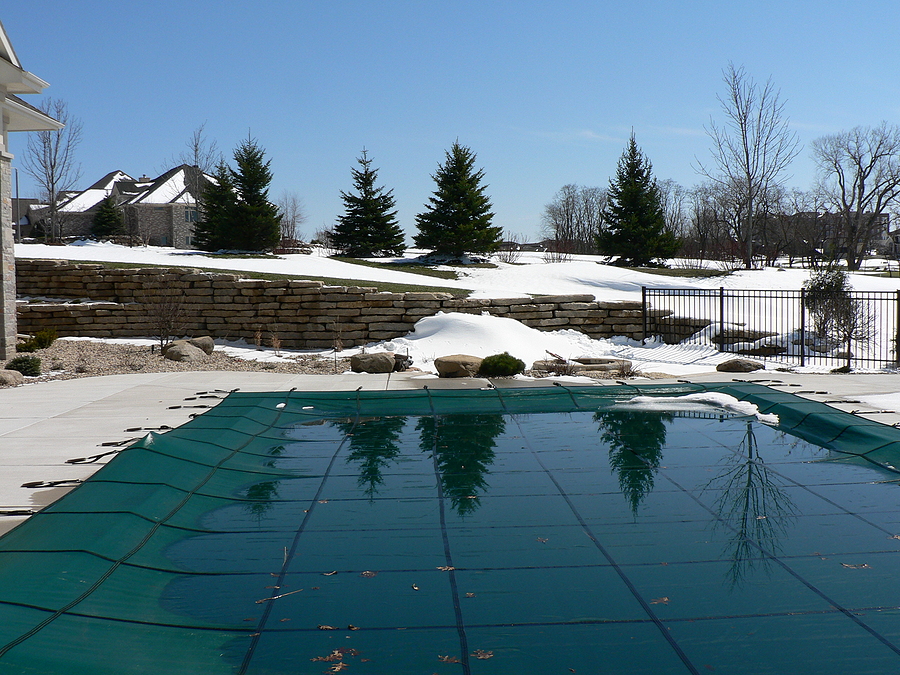A pool cover or pool enclosure is the best investment to shelter your swimming pool during winters, but what’s safeguarding it?
If nothing, then your pool cover may get damaged due to chilly winds and icy temperatures. This may cost you money in repairs or possibly will ruin your swimming pool shielder.
So, how to deal with this?
Herein we are suggesting 5 ways to keep your pool cover well maintained throughout the winters:
1. Prevention against ice
Table of Contents
During freezing temperatures, the water expands to form ice that exerts pressure on the pool cover causing a risk of damage to the cover. Some of the ways to protect your winter cover against ice are:
- Pool pillow: A pool pillow is somewhat similar to a cushion. All you have to do is blow it up and place it in the middle of the pool under the cover. It will absorb some of the ice pressure. Sounds silly? But it actually works.
- Winter cover pump: In case of large ice build-ups, do not try to clear them. This may harm your pool cover and swimming pool due to its sharp edges. Instead, let the ice melt and then remove the water with a winter pump.
- The water level on pool cover: Keeping 1/2″ water level on top of the pool cover will avoid large ice buildups, and you can clean it up well throughout the winter.
2. Protection against limbs and branches
During winters, the weight of snow and ice on trees causes weak branches to fall on your pool cover. This leads to punctures in the swimming pool cover. Some of the ways to deal with this situation are:
- The pool owner should call the tree trimming expert ahead of time to remove any overhanging branches that may damage the pool.
- Buy a pool leaf net that can be installed over the pool cover to add protection against falling leaves and limbs.
3. Install cover clips
Pool cover clips are a simple device that clips the cover directly underside of the pool rail.
Don’t be frugal about the number of clips. Make sure to create a layer of protection to the pool to avoid anything from getting in or under the cover. They’re cheap and add an extra layer of cover security against all dirt, debris, and other organic.
You can use a lock-in cover that clips into aluminum tracks of your pool.
4. Add water on the top of the cover
This may sound illogical, but adding a small quantity of water on top of the cover is a smart hack. This adds extra protection and weight to the pool cover itself.
Keeping some extra water on the top of the cover will protect it from wind damage. But make sure that the layer of water should not be more than three inches.
In case you are having a tarp cover, use water bags to keep your pool cover secure.
Avoid using any potentially sharp edges such as bricks as they can fall into the pool and may damage it.
5. Strap it down
During winters, make sure to buy a heavy-duty winter cover with grommets. These are holes around the cover edges with metal rings.
Moreover, they also have a cable and winch system to tighten the cover around the pool. Here’s how to use this:
- Drape the pool cover under the rails of the pool;
- Place the cable through the grommets;
- Tighten it by using the winch.
The right installation will keep the cover rigid and prevent the wind from getting underneath.
In the end…
Every pool cover whether for an in-ground or above-ground pool has unique threats during the winter months. But no matter what, don’t skip installing a swimming pool cover during the season, and instead follow these tips to stave off the risk.
Happy swimming in winters!
Image Source: BigStock.com (Licensed)
Site Disclaimer
The Content in this post and on this site is for informational and entertainment purposes only. You should not construe any such information or other material as legal, tax, investment, financial, or other advice. Nothing contained on our Site constitutes a solicitation, recommendation, endorsement, or offer by HII or any third party service provider to buy or sell any securities or other financial instruments.
Nothing in this post or on this site constitutes professional and/or financial advice. You alone assume the sole responsibility of evaluating the merits and risks associated with the use of any information or other content in this post or on this site.
You recognize that when making investments, an investor may get back less than the amount invested. Information on past performance, where given, is not necessarily a guide to future performance.
Related Categories: Home, Reviews







